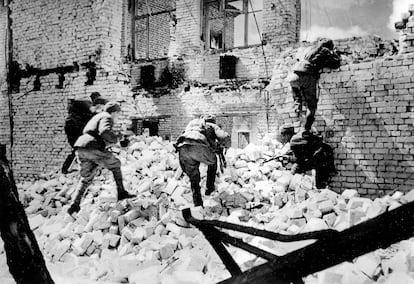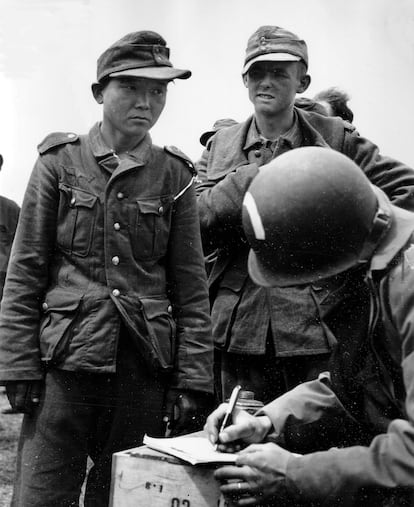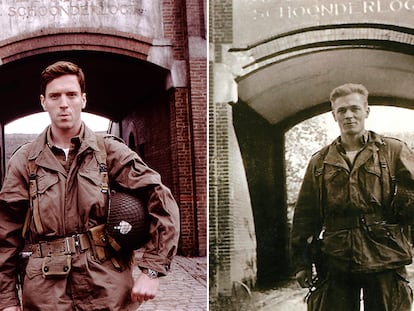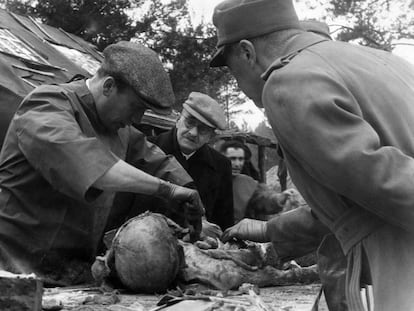What if all the history books are wrong and World War II started before or after 1939?
Two of the leading historians of the conflict, Antony Beevor and Olivier Wieviorka, suggest that it could have started in 1937 and 1941, respectively


Tens of thousands of books have been written about World War II. Every battle has been analyzed, from the battles on the front to actions behind enemy lines, the generals and the political leaders, the resistance and collaborators, not to mention the Holocaust. However, little research has been done whose ambition, in a single volume, has been to cover of the most decisive and catastrophic events not only of the 20th century, but in all of recorded history. Two of the most significant, The Second World War, by the British historian Antony Beevor, and Histoire totale de la Seconde Guerre Mondiale, by the French historian Olivier Wieviorka, which has just been published in France. While different in their approaches, they agree on one crucial point: the conflict did not begin in 1939.
Beevor argues, in his 800-page tome that came out a decade ago, that World War II actually began in 1937, when Japan invaded China. Meanwhile, Wieviorka believes that there can be no talk of a global conflict until 1941, with the Japanese attack against Pearl Harbor and the Nazi invasion of the USSR. They are not the only ones. The journalist Manu Leguineche thus began his general history of the conflict, The Years of Infamy: “The Second World War began in my town, Guernica.” This was stated by the United States ambassador in Madrid, Claude G. Bowers, in 1954 in his book Mission in Spain. For the first time in history, the aerial bombing of a civilian target helped the German air force to test its planes and bombs.
Ian Kershaw, one of the great specialists in Nazism, divides his history of the European century into two periods. The first, titled Descent into Hell, covers the period 1914 to 1949, because it considers that in reality there was only one great war in Europe. Furthermore, he proposes that it did not end with Germany’s capitulation in 1945, but instead, when the postwar contours became clear in 1949. “I had intended to end this first volume in 1945, when the fighting stopped,” Kershaw writes. “But although hostilities officially ended in Europe in May of that year (they continued until August against Japan), the fateful course that the years 1945-1949 followed was so evidently determined by the war and the reactions to it, that I thought it was justified to look a little further than the time when peace was officially restored on the continent again.”

According to the received chronology, World War II broke out with the Nazi invasion of Poland on September 1, 1939. On June 22, 1941, Hitler launched the full-scale invasion of the USSR, despite having signed a non-aggression pact with Stalin. On December 7, 1941, Japan launched a surprise attack on the American naval base in Hawaii, resulting in the United States entering the conflict. On May 8, 1945, the unconditional surrender of Germany took place (in Western countries it is commemorated on the 8th, while in Russia it is celebrated on the 9th, in one of the first signs of the division that was opening up between the former allies). On August 14, 1945, after detonating two atomic bombs (one over Hiroshima and another over Nagasaki), Japan surrendered unconditionally and ended “a barbaric conflict in which between 60 and 70 million people died, a macabre balance in which civilians were killed,” writes Wieviorka.
But in such a brutal and complex conflict, which involved 23 countries and took place on all continents except the Americas (despite the participation of the U.S. and Canada in the war), it is impossible not to debate the widely accepted chronology. “Myself and other historians have the feeling that the Sino-Japanese War that began in 1937 and continued until 1945 cannot be ignored,” Antony Beevor, the most famous living historian of the conflict, explains. “Nor can we ignore the confrontation between the USSR and Japan in the Battle of Khalkhin Gol, also known as the Nomonhan Incident, in August 1939, because it changed the course of the war: Japan decided not to invade Siberia, but to attack the American, Dutch, and British territories in Asia.”

In fact, his book The Second World War begins with an image that unites these multiple conflicts, which the most traditional historiography has treated separately: it shows a Korean soldier who has been taken prisoner by the Allies, shortly after of the June 1944 landings. That fighter, Yang Kyoungjong, was forcibly recruited by the Japanese and sent to Manchuria in 1938. He was later captured by the Soviets in the Battle of Khalkhin Gol, but in 1942 he was forced to fight in Kharkiv, where he was in turn captured by the Nazis. They also forced him to serve in a foreign battalion in charge of the defense of Utah Beach during the Allied landings in Normandy in June 1944. He spent time in a prisoner of war camps in the United Kingdom and, when he was released, he immigrated to Illinois in the United States, where he passed away in 1992.
Wieviorka’s book, a monumental work of almost 1,000 pages, edited in part by Perrin and the French Ministry of Defense, takes another view: the conflict was actually an amalgamation of different wars, but it did not become global until 1941. “Historians like to question chronological divisions, even when they seem obvious,” Wieviorka, the author of an extensive bibliography on the conflict and a leading expert on the French Resistance, explains. “For example, the dates of World War I (did it end in 1918?) or the Cold War (did it start in 1917? 1943? 1945? 1947?) are open to debate. World War II is no exception. Beevor’s point of view is entirely defensible. For my part, I think we should look at the meaning of words. If we think of the conflict as a world war, which forces the belligerents to connect the different theaters of operations, the war becomes truly global in 1941, with the entry of the United States, Japan, and the Soviet Union into the fray.”

However, Wieviorka does not share Leguineche’s opinion — and that of other historians — that the Spanish Civil War (1936-1939, although for certain researchers it began in 1934 in Asturias) was part of that great conflict. “Some authors affirm that the Spanish [Civil] War was a ‘dress rehearsal’ for World War II. I do not share this opinion. It must be admitted that there were a number of harbingers of that conflict, such as the bombing of civilians. But otherwise, I remain skeptical. First, because Asia was not involved in any way, nor was the United States. Second, because the naval component played a limited role. Lastly, and above all, it seems to me that internal issues outweighed the more global issues that characterized World War II.
Another great authority on the conflict, Max Hastings, also wrote an overarching history, All Hell Let Loose. The World at War 1939-1945. He does not question the official chronology, but he provides a sentence that sums up the dimension of that cataclysm very well: “It was the most colossal and terrible experience that humans have ever lived through, which has always inspired those who have dealt with it, since in our times there is a great humility born of gratitude for not having had to experience anything comparable.” The worst thing is not that we still do not know when it started or when it ended, but that for dictators like Vladimir Putin, it can still be used to start a new war.
Sign up for our weekly newsletter to get more English-language news coverage from EL PAÍS USA Edition









































